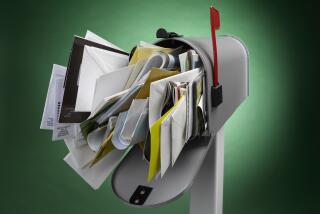How to Help Keep Your Workplace Safe, Theft-Free
- Share via
* Think before talking about the details of your job or working on sensitive projects in public places such as restaurants, airplanes, classrooms and gyms.
* Know who’s on the other end of the line--telephone, modem, fax--before giving out sensitive information. It could be a competitor looking for helpful employees who are too eager to give out information about their employer.
* Keep your work area clear. When you’ll be gone for a few hours and at the end of the day, put your papers in a drawer or file cabinet.
* Think about what’s on a piece of paper before you toss it into the trash. If it’s sensitive information, tear it up or use a shredder.
* Challenge strangers who enter your work area.
* Call a supervisor or security for help.
* Protect identification badges, office keys, and codes as you would your own credit cards and keys.
* When you’re away from the office, don’t let anyone see or overhear your phone card codes.
* Use the password system on your computer to prohibit unauthorized users from accessing your computer. Avoid using personal information and change your password frequently.
* Don’t include confidential or personal information in e-mail.
* Be sure your safe is fireproof and securely anchored.
* Remember to change the combination when an employee who has had access to it leaves your business.
* Before you invest in an alarm system, check with several companies and decide what level of security fits your needs. Contact your local law enforcement agency to recommend established companies. Learn how to use your system properly. Check the system daily and run a test when closing.
* Mark equipment--registers, adding machines, calculators, computers, typewriters--with an identification number (for example, tax identification or license number). Keep a record of all identification numbers off the premises with other important records.
* Establish and enforce clear policies about employee theft, employee substance abuse, crime reporting, opening and closing the business, and other security procedures.
* Make sure all outside entrances and inside security doors have deadbolt locks. If you use padlocks, they should be made of steel and kept locked at all times.
* Remember to remove serial numbers from your locks, to prevent unauthorized keys from being made.
* All outside or security doors should be metal-lined and secured with metal security crossbars. Pin all exposed hinges to prevent removal.
* Windows should have secure locks and burglar-resistant glass.
Source: The National Citizens’ Crime Prevention Campaign
More to Read
Inside the business of entertainment
The Wide Shot brings you news, analysis and insights on everything from streaming wars to production — and what it all means for the future.
You may occasionally receive promotional content from the Los Angeles Times.










